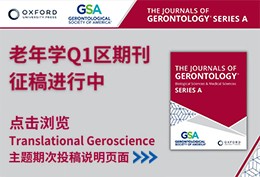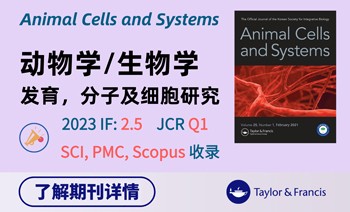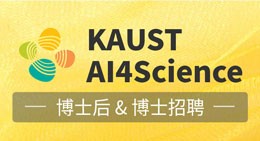当前位置:
X-MOL 学术
›
Int. J. Appl. Earth Obs. Geoinf.
›
论文详情
Our official English website, www.x-mol.net, welcomes your
feedback! (Note: you will need to create a separate account there.)
An integrated graph-spatial method for high-performance geospatial-temporal semantic query
International Journal of Applied Earth Observation and Geoinformation ( IF 7.6 ) Pub Date : 2025-02-22 , DOI: 10.1016/j.jag.2025.104437
Zichen Yue , Wei Zhu , Xin Mei , Shaobo Zhong
International Journal of Applied Earth Observation and Geoinformation ( IF 7.6 ) Pub Date : 2025-02-22 , DOI: 10.1016/j.jag.2025.104437
Zichen Yue , Wei Zhu , Xin Mei , Shaobo Zhong
Knowledge graphs (KGs) have gained significant attention in the GIS community as a cutting-edge technology for linking heterogeneous and multimodal data sources. However, the efficiency of semantic querying of geospatial-temporal data in KGs remains a challenge. Graph databases excel at handling complex semantic associations but exhibit low efficiency in geospatial analysis tasks, such as topological analysis and geographic calculations, while relational databases excel at geospatial data storage and computation but struggle to efficiently process association analysis. To address this issue, we propose GraST, a geospatial-temporal semantic query optimization method that integrates property graphs and relational databases. GraST stores complete geospatial-temporal objects in a relational database (using built-in or extended spatial data engines), and employs spatiotemporal partitioning and indexing to enhance query efficiency. Simultaneously, GraST stores lightweight geospatial-temporal nodes in the graph database and links them to multi-granularity time tree and Geohash encoding nodes to enhance spatiotemporal aggregation capabilities. During query processing, user queries are broken down into graph semantic searches and geospatial calculations, pushed down to the graph and relational database for execution. Additionally, GraST adopts the two-phase commit protocol for cross-database data synchronization. We implemented a GraST prototype system by integrating PostGIS and Neo4j, and conducted performance evaluations and case studies on large-scale real-world datasets. Experimental results demonstrate that GraST shortens query response times by 1–2 orders of magnitude and offers flexible support for diverse geospatial-temporal semantic queries.
中文翻译:

一种用于高性能地理时空语义查询的集成图空间方法
知识图谱 (KG) 作为链接异构和多模态数据源的尖端技术,在 GIS 社区中受到了极大的关注。然而,KG 中地理时空数据的语义查询效率仍然是一个挑战。图形数据库擅长处理复杂的语义关联,但在地理空间分析任务(如拓扑分析和地理计算)中效率低下,而关系数据库擅长地理空间数据存储和计算,但难以有效地处理关联分析。为了解决这个问题,我们提出了 GraST,这是一种集成了属性图和关系数据库的地理时空语义查询优化方法。GraST 将完整的地理空间-时间对象存储在关系数据库中(使用内置或扩展的空间数据引擎),并采用时空分区和索引来提高查询效率。同时,GraST 将轻量级的地理时空节点存储在图数据库中,并将它们链接到多粒度时间树和 Geohash 编码节点,以增强时空聚合能力。在查询处理过程中,用户查询被分解为图形语义搜索和地理空间计算,并向下推送到图形和关系数据库执行。此外,GraST 采用两阶段提交协议进行跨数据库数据同步。我们通过集成 PostGIS 和 Neo4j 实现了 GraST 原型系统,并对大规模真实数据集进行了性能评估和案例研究。实验结果表明,GraST 将查询响应时间缩短了 1-2 个数量级,并为不同的地理时空语义查询提供了灵活的支持。
更新日期:2025-02-22
中文翻译:

一种用于高性能地理时空语义查询的集成图空间方法
知识图谱 (KG) 作为链接异构和多模态数据源的尖端技术,在 GIS 社区中受到了极大的关注。然而,KG 中地理时空数据的语义查询效率仍然是一个挑战。图形数据库擅长处理复杂的语义关联,但在地理空间分析任务(如拓扑分析和地理计算)中效率低下,而关系数据库擅长地理空间数据存储和计算,但难以有效地处理关联分析。为了解决这个问题,我们提出了 GraST,这是一种集成了属性图和关系数据库的地理时空语义查询优化方法。GraST 将完整的地理空间-时间对象存储在关系数据库中(使用内置或扩展的空间数据引擎),并采用时空分区和索引来提高查询效率。同时,GraST 将轻量级的地理时空节点存储在图数据库中,并将它们链接到多粒度时间树和 Geohash 编码节点,以增强时空聚合能力。在查询处理过程中,用户查询被分解为图形语义搜索和地理空间计算,并向下推送到图形和关系数据库执行。此外,GraST 采用两阶段提交协议进行跨数据库数据同步。我们通过集成 PostGIS 和 Neo4j 实现了 GraST 原型系统,并对大规模真实数据集进行了性能评估和案例研究。实验结果表明,GraST 将查询响应时间缩短了 1-2 个数量级,并为不同的地理时空语义查询提供了灵活的支持。

































 京公网安备 11010802027423号
京公网安备 11010802027423号